本文带你使用移动传感器产生的原始数据来识别人类活动。 人体活动识别(HAR)是一种使用人工智能(AI)从智能手表等活动记录设备产生的原始数据中识别人类活动的方法。当人们执行某种动作时,人们佩戴的传感器(智能手表、手环、专用设备等)就会产生信号。这些收集信息的传感器包括加速度计、陀螺仪和磁力计。人类活动识别有各种各样的应用,从为病人和残疾人提供帮助到像游戏这样严重依赖于分析运动技能的领域。我们可以将这些人类活动识别技术大致分为两类:固定传感器和移动传感器。在本文中,我们使用移动传感器产生的原始数据来识别人类活动。
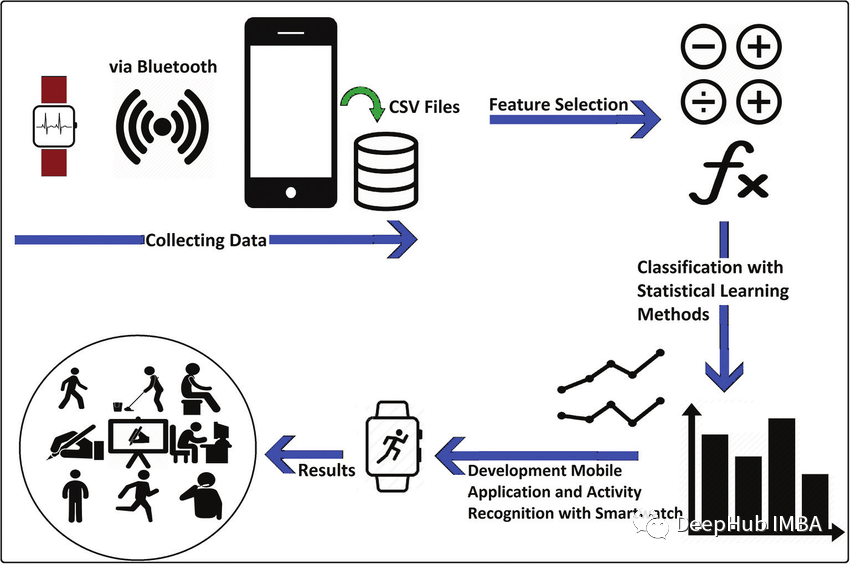
在本文中,我将使用LSTM (Long - term Memory)和CNN (Convolutional Neural Network)来识别下面的人类活动:
- 下楼
- 上楼
- 跑步
- 坐着
- 站立
- 步行
概述
你可能会考虑为什么我们要使用LSTM-CNN模型而不是基本的机器学习方法? 机器学习方法在很大程度上依赖于启发式手动特征提取人类活动识别任务,而我们这里需要做的是端到端的学习,简化了启发式手动提取特征的操作。 我将要使用的模型是一个深神经网络,该网络是LSTM和CNN的组合形成的,并且具有提取活动特征和仅使用模型参数进行分类的能力。 这里我们使用WISDM数据集,总计1.098.209样本。通过我们的训练,模型的F1得分为0.96,在测试集上,F1得分为0.89。
我将要使用的模型是一个深神经网络,该网络是LSTM和CNN的组合形成的,并且具有提取活动特征和仅使用模型参数进行分类的能力。 这里我们使用WISDM数据集,总计1.098.209样本。通过我们的训练,模型的F1得分为0.96,在测试集上,F1得分为0.89。
导入库
首先,我们将导入我们将需要的所有必要库。
我们将使用Sklearn,Tensorflow,Keras,Scipy和Numpy来构建模型和进行数据预处理。使用PANDAS 进行数据加载,使用matplotlib进行数据可视化。from pandas import read_csv, uniqueimport numpy as npfrom scipy.interpolate import interp1dfrom scipy.stats import modefrom sklearn.preprocessing import LabelEncoderfrom sklearn.metrics import classification_report, confusion_matrix, ConfusionMatrixDisplayfrom tensorflow import stackfrom tensorflow.keras.utils import to_categoricalfrom keras.models import Sequentialfrom keras.layers import Dense, GlobalAveragePooling1D, BatchNormalization, MaxPool1D, Reshape, Activationfrom keras.layers import Conv1D, LSTMfrom keras.callbacks import ModelCheckpoint, EarlyStoppingimport matplotlib.pyplot as plt%matplotlib inlineimport warningswarnings.filterwarnings("ignore")
数据集加载和可视化
WISDM是由个人腰间携带的移动设备上的加速计记录下来。该数据收集是由个人监督的可以确保数据的质量。我们将使用的文件是WISDM_AR_V1.1_RAW.TXT。使用PANDAS,可以将数据集加载到DataAframe中,如下面代码:
def read_data(filepath):df = read_csv(filepath, header=None, names=['user-id','activity','timestamp','X','Y','Z'])## removing ';' from last column and converting it to floatdf['Z'].replace(regex=True, inplace=True, to_replace=r';', value=r'')df['Z'] = df['Z'].apply(convert_to_float)return dfdef convert_to_float(x):try:return np.float64(x)except:return np.nandf = read_data('Dataset/WISDM_ar_v1.1/WISDM_ar_v1.1_raw.txt')df
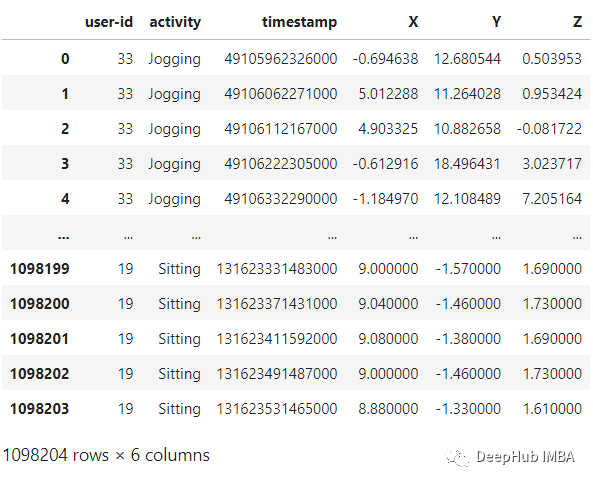
plt.figure(figsize=(15, 5))plt.xlabel('Activity Type')plt.ylabel('Training examples')df['activity'].value_counts().plot(kind='bar',title='Training examples by Activity Types')plt.show()plt.figure(figsize=(15, 5))plt.xlabel('User')plt.ylabel('Training examples')df['user-id'].value_counts().plot(kind='bar',title='Training examples by user')plt.show()
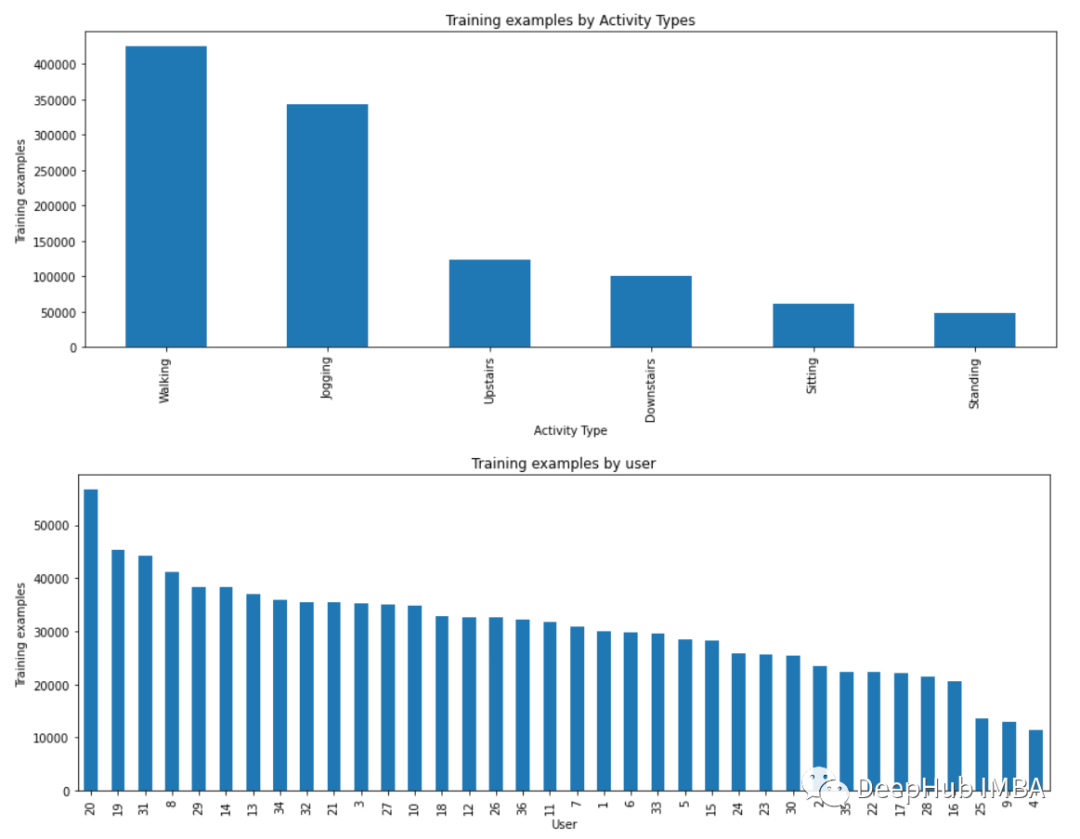
现在我将收集的三个轴上的加速度计数据进行可视化。
def axis_plot(ax, x, y, title):ax.plot(x, y, 'r')ax.set_title(title)ax.xaxis.set_visible(False)ax.set_ylim([min(y) - np.std(y), max(y) + np.std(y)])ax.set_xlim([min(x), max(x)])ax.grid(True)for activity in df['activity'].unique():limit = df[df['activity'] == activity][:180]fig, (ax0, ax1, ax2) = plt.subplots(nrows=3, sharex=True, figsize=(15, 10))axis_plot(ax0, limit['timestamp'], limit['X'], 'x-axis')axis_plot(ax1, limit['timestamp'], limit['Y'], 'y-axis')axis_plot(ax2, limit['timestamp'], limit['Z'], 'z-axis')plt.subplots_adjust(hspace=0.2)fig.suptitle(activity)plt.subplots_adjust(top=0.9)plt.show()
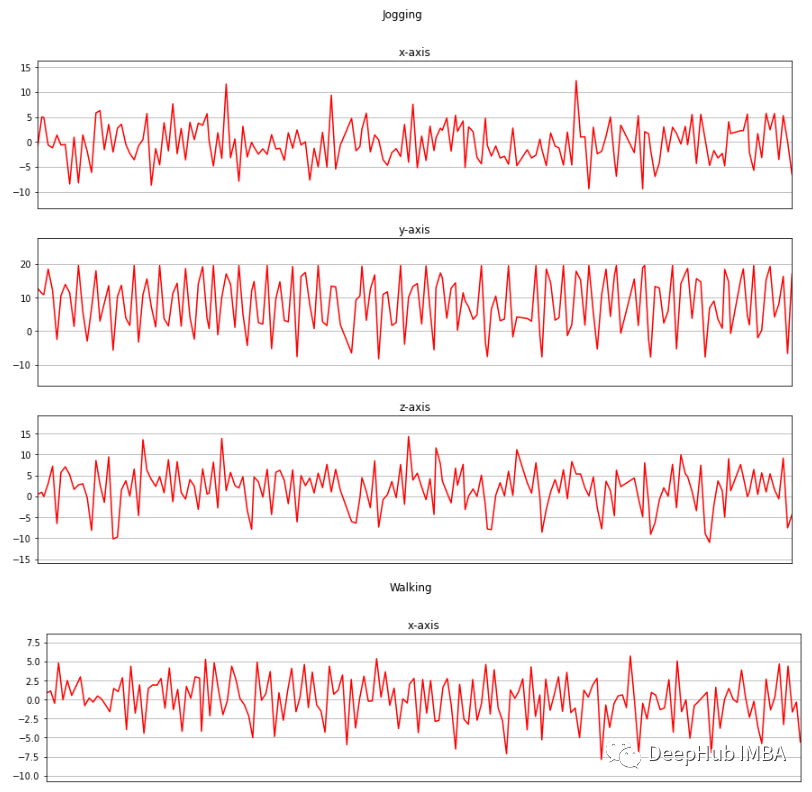
数据预处理
数据预处理是一项非常重要的任务,它使我们的模型能够更好地利用我们的原始数据。这里将使用的数据预处理方法有:
- 标签编码
- 线性插值
- 数据分割
- 归一化
- 时间序列分割
- 独热编码
- Downstairs [0]
- Jogging [1]
- Sitting [2]
- Standing [3]
- Upstairs [4]
- Walking [5]
label_encode = LabelEncoder()df['activityEncode'] = label_encode.fit_transform(df['activity'].values.ravel())df
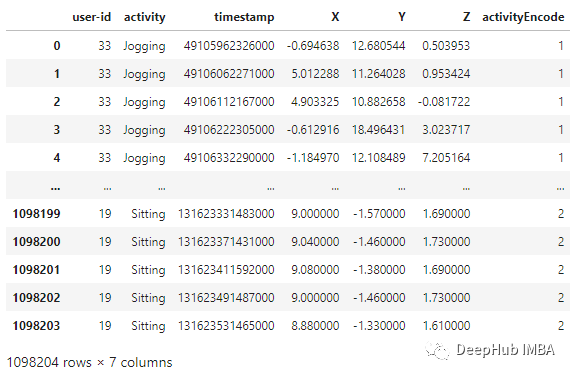
线性插值 利用线性插值可以避免采集过程中出现NaN的数据丢失的问题。它将通过插值法填充缺失的值。虽然在这个数据集中只有一个NaN值,但为了我们的展示,还是需要实现它。
数据分割 根据用户id进行数据分割,避免数据分割错误。我们在训练集中使用id小于或等于27的用户,其余的在测试集中使用。interpolation_fn = interp1d(df['activityEncode'] ,df['Z'], kind='linear')null_list = df[df['Z'].isnull()].index.tolist()for i in null_list:y = df['activityEncode'][i]value = interpolation_fn(y)df['Z']=df['Z'].fillna(value)print(value)
归一化 在训练之前,需要将数据特征归一化到0到1的范围内。我们用的方法是:df_test = df[df['user-id'] > 27]df_train = df[df['user-id'] <= 27]

df_train['X'] = (df_train['X']-df_train['X'].min())/(df_train['X'].max()-df_train['X'].min())df_train['Y'] = (df_train['Y']-df_train['Y'].min())/(df_train['Y'].max()-df_train['Y'].min())df_train['Z'] = (df_train['Z']-df_train['Z'].min())/(df_train['Z'].max()-df_train['Z'].min())df_train
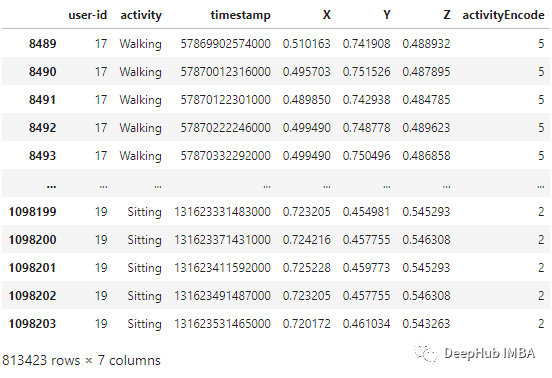
时间序列分割 因为我们处理的是时间序列数据, 所以需要创建一个分割的函数,标签名称和每个记录的范围进行分段。此函数在x_train和y_train中执行特征的分离,将每80个时间段分成一组数据。
这样,x_train和y_train形状变为:def segments(df, time_steps, step, label_name):N_FEATURES = 3segments = []labels = []for i in range(0, len(df) - time_steps, step):xs = df['X'].values[i:i+time_steps]ys = df['Y'].values[i:i+time_steps]zs = df['Z'].values[i:i+time_steps]label = mode(df[label_name][i:i+time_steps])[0][0]segments.append([xs, ys, zs])labels.append(label)reshaped_segments = np.asarray(segments, dtype=np.float32).reshape(-1, time_steps, N_FEATURES)labels = np.asarray(labels)return reshaped_segments, labelsTIME_PERIOD = 80STEP_DISTANCE = 40LABEL = 'activityEncode'x_train, y_train = segments(df_train, TIME_PERIOD, STEP_DISTANCE, LABEL)
这里还存储了一些后面用到的数据:时间段(time_period),传感器数(sensors)和类(num_classes)的数量。print('x_train shape:', x_train.shape)print('Training samples:', x_train.shape[0])print('y_train shape:', y_train.shape)x_train shape: (20334, 80, 3)Training samples: 20334y_train shape: (20334,)
最后需要使用Reshape将其转换为列表,作为keras的输入:time_period, sensors = x_train.shape[1], x_train.shape[2]num_classes = label_encode.classes_.sizeprint(list(label_encode.classes_))['Downstairs', 'Jogging', 'Sitting', 'Standing', 'Upstairs', 'Walking']
最后需要将所有数据转换为float32。input_shape = time_period * sensorsx_train = x_train.reshape(x_train.shape[0], input_shape)print("Input Shape: ", input_shape)print("Input Data Shape: ", x_train.shape)Input Shape: 240Input Data Shape: (20334, 240)
独热编码 这是数据预处理的最后一步,我们将通过编码标签并将其存储到y_train_hot中来执行。x_train = x_train.astype('float32')y_train = y_train.astype('float32')
y_train_hot = to_categorical(y_train, num_classes)print("y_train shape: ", y_train_hot.shape)y_train shape: (20334, 6)
模型

我们使用的模型是一个由8层组成的序列模型。模型前两层由LSTM组成,每个LSTM具有32个神经元,使用的激活函数为Relu。然后是用于提取空间特征的卷积层。 在两层的连接处需要改变LSTM输出维度,因为输出具有3个维度(样本数,时间步长,输入维度),而CNN则需要4维输入(样本数,1,时间步长,输入)。 第一个CNN层具有64个神经元,另一个神经元有128个神经元。在第一和第二CNN层之间,我们有一个最大池层来执行下采样操作。然后是全局平均池(GAP)层将多D特征映射转换为1-D特征向量,因为在此层中不需要参数,所以会减少全局模型参数。然后是BN层,该层有助于模型的收敛性。 最后一层是模型的输出层,该输出层只是具有SoftMax分类器层的6个神经元的完全连接的层,该层表示当前类的概率。
model = Sequential()model.add(LSTM(32, return_sequences=True, input_shape=(input_shape,1), activation='relu'))model.add(LSTM(32,return_sequences=True, activation='relu'))model.add(Reshape((1, 240, 32)))model.add(Conv1D(filters=64,kernel_size=2, activation='relu', strides=2))model.add(Reshape((120, 64)))model.add(MaxPool1D(pool_size=4, padding='same'))model.add(Conv1D(filters=192, kernel_size=2, activation='relu', strides=1))model.add(Reshape((29, 192)))model.add(GlobalAveragePooling1D())model.add(BatchNormalization(epsilon=1e-06))model.add(Dense(6))model.add(Activation('softmax'))print(model.summary())
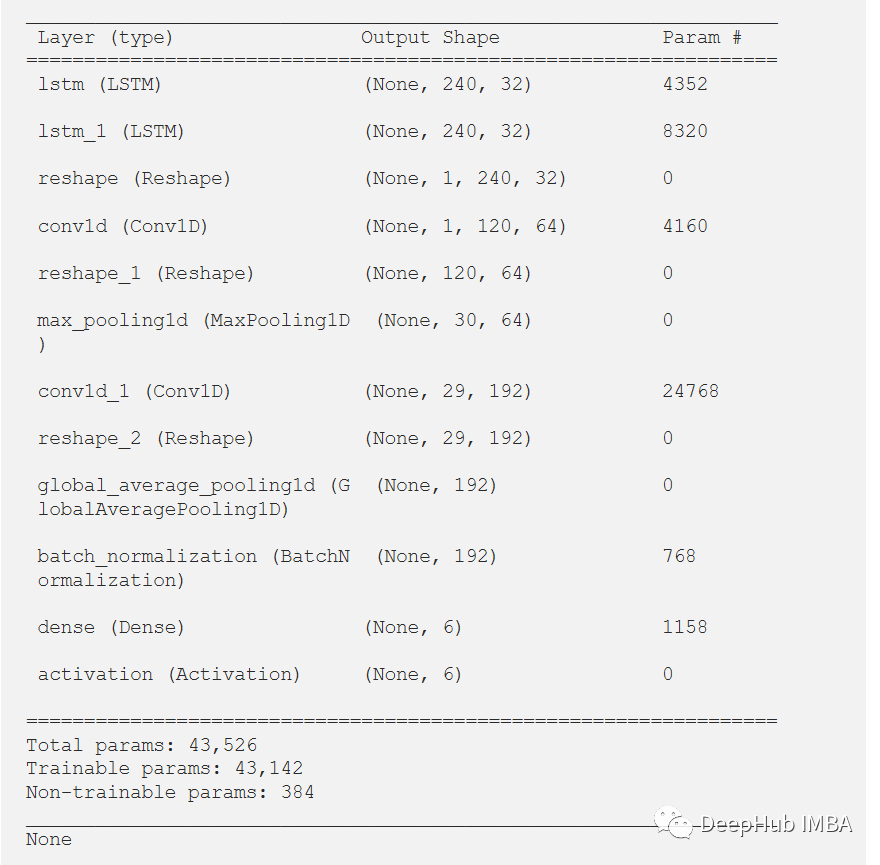
训练和结果
经过训练,模型给出了98.02%的准确率和0.0058的损失。训练F1得分为0.96。
model.compile(loss='categorical_crossentropy', optimizer='adam', metrics=['accuracy'])history = model.fit(x_train,y_train_hot,batch_size= 192,epochs=100)

可视化训练的准确性和损失变化图。
plt.figure(figsize=(6, 4))plt.plot(history.history['accuracy'], 'r', label='Accuracy of training data')plt.plot(history.history['loss'], 'r--', label='Loss of training data')plt.title('Model Accuracy and Loss')plt.ylabel('Accuracy and Loss')plt.xlabel('Training Epoch')plt.ylim(0)plt.legend()plt.show()y_pred_train = model.predict(x_train)max_y_pred_train = np.argmax(y_pred_train, axis=1)print(classification_report(y_train, max_y_pred_train))
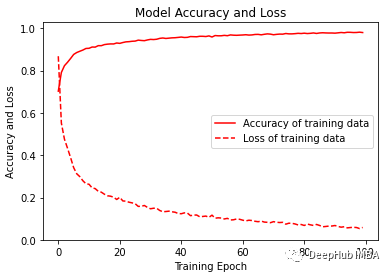
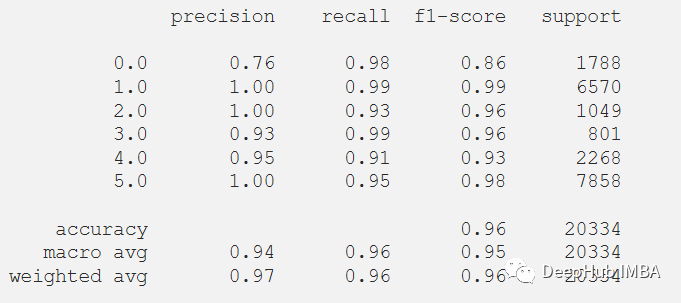
在测试数据集上测试它,但在通过测试集之前,需要对测试集进行相同的预处理。
在评估我们的测试数据集后,得到了89.14%的准确率和0.4647的损失。F1测试得分为0.89。df_test['X'] = (df_test['X']-df_test['X'].min())/(df_test['X'].max()-df_test['X'].min())df_test['Y'] = (df_test['Y']-df_test['Y'].min())/(df_test['Y'].max()-df_test['Y'].min())df_test['Z'] = (df_test['Z']-df_test['Z'].min())/(df_test['Z'].max()-df_test['Z'].min())x_test, y_test = segments(df_test,TIME_PERIOD,STEP_DISTANCE,LABEL)x_test = x_test.reshape(x_test.shape[0], input_shape)x_test = x_test.astype('float32')y_test = y_test.astype('float32')y_test = to_categorical(y_test, num_classes)
score = model.evaluate(x_test, y_test)print("Accuracy:", score[1])print("Loss:", score[0])

下面绘制混淆矩阵更好地理解对测试数据集的预测。
predictions = model.predict(x_test)predictions = np.argmax(predictions, axis=1)y_test_pred = np.argmax(y_test, axis=1)cm = confusion_matrix(y_test_pred, predictions)cm_disp = ConfusionMatrixDisplay(confusion_matrix= cm)cm_disp.plot()plt.show()
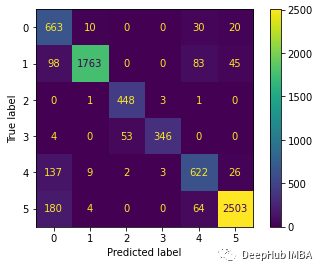 还可以在测试数据集上评估的模型的分类报告。
还可以在测试数据集上评估的模型的分类报告。
print(classification_report(y_test_pred, predictions))
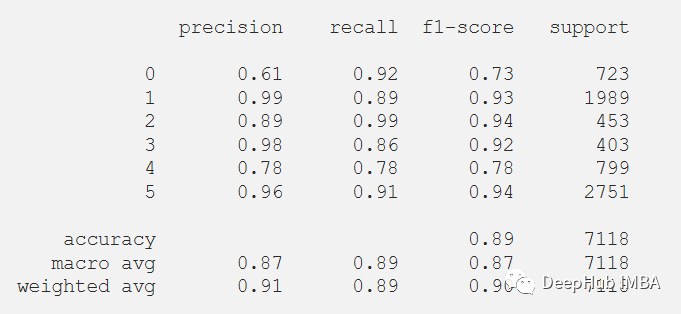
总结
LSTM-CNN模型的性能比任何其他机器学习模型要好得多。本文的代码可以在GitHub上找到。 https://github.com/Tanny1810/Human-Activity-Recognition-LSTM-CNN 您可以尝试自己实现它,通过优化模型来提高F1分数。 另:这个模型是来自于Xia Kun, Huang Jianguang, and Hanyu Wang在IEEE期刊上发表的论文LSTM-CNN Architecture for Human Activity Recognition。 https://ieeexplore.ieee.org/abstract/document/9043535 审核编辑 :李倩
声明:本文内容及配图由入驻作者撰写或者入驻合作网站授权转载。文章观点仅代表作者本人,不代表电子发烧友网立场。文章及其配图仅供工程师学习之用,如有内容侵权或者其他违规问题,请联系本站处理。
举报投诉
-
传感器
+关注
关注
2573文章
54368浏览量
786026 -
神经网络
+关注
关注
42文章
4827浏览量
106796 -
机器学习
+关注
关注
66文章
8541浏览量
136233 -
移动传感器
+关注
关注
0文章
8浏览量
8678
原文标题:基于LSTM-CNN的人体活动识别
文章出处:【微信号:vision263com,微信公众号:新机器视觉】欢迎添加关注!文章转载请注明出处。
发布评论请先 登录
相关推荐
热点推荐
如何使用 CYW20829 将获得的传感器数据发送到广播中?
我计划使用外部传感器将原始数据输出到蓝牙模块的闪存中,然后通过蓝牙发送原始数据,与我个人笔记本电脑的蓝牙配对,并在我的个人电脑中获取这些原始数据。 我计划先用 python 获取
发表于 07-02 07:16
Analog Devices Inc. EV-STRUCTURAL-ARDZ活动传感器评估板特性/应用/框图
Analog Devices Inc. EV-STRUCTURAL-ARDZ活动传感器评估板是一款振动传感器,使用ADXL343数字输出MEMS加速计芯片和ADIS16203可编程360° 倾角仪

AMEYA360:太阳诱电气味传感器致力于模仿人类的嗅觉系统进行研发
能够吸附多种气味分子的膜是关键所在。检测到的气味分子会通过传感器转换成电信号并进行量化。 QCM型气味传感器量化频率变化。MEMS型气味传感器则量化电阻变化。通过机器学习从量化数据中
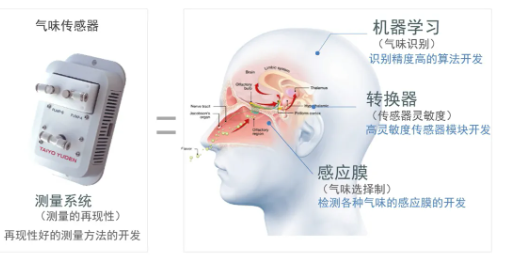
MAX32664超低功耗生物识别传感器集中器技术手册
MAX32664为传感器集中器家族,带有适合可穿戴设备的嵌入式固件和算法。器件无缝支持客户所需的传感器功能,包括与Maxim的光学传感器方案通信,以及为外部提供
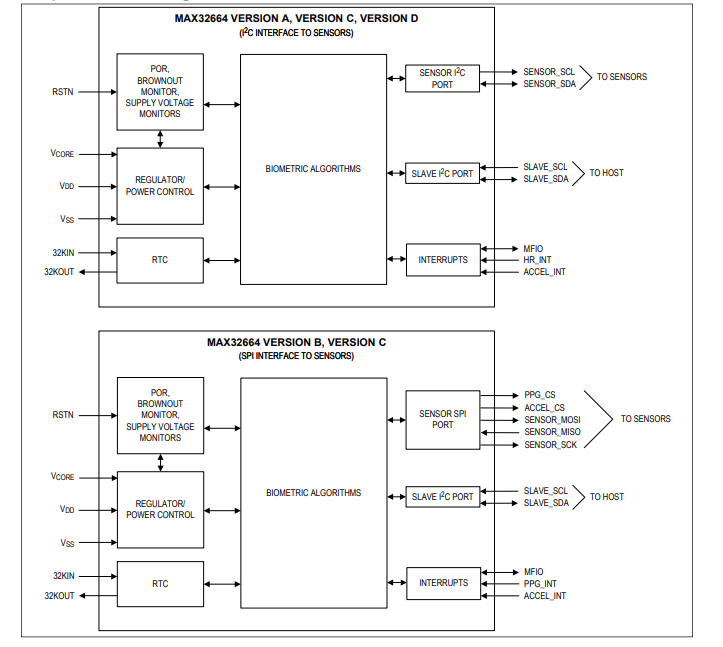
MAX32674C超低功耗生物识别算法/传感器中枢技术手册
MAX32674C是一款算法/传感器中枢,提供嵌入式软件和先进的算法,适用于健身和医疗可穿戴设备市场,可直接与ADI的光学传感器进行接口。配置为算法中枢时,MAX32674C可处理原始数据并输出
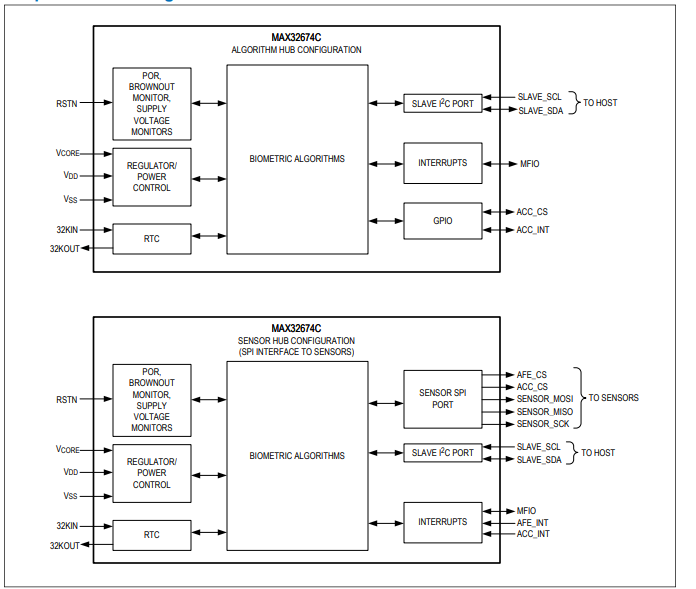
传感器谐波频率产生原因解析
传感器谐波频率(通常指的是传感器的谐振频率及其相关谐波)的产生原因可以从以下几个方面进行解析。 一、传感器机械结构特性 1. 一阶谐振频率:对于压电式
零知开源——MPU6050六轴传感器模块实践教程,轻松实现运动检测!
。
原始数据:
原始数据显示了MPU6050直接读取的数值,这些数值是传感器内部ADC转换后的数字量。
归一化数据:
归一化数据是将
发表于 02-20 15:53
请问使用AFE4400SPO2EVM测试完之后,GUI里面的数据如何作为原始数据导入到python操作界面里呢?
请问使用AFE4400SPO2EVM测试完之后,GUI里面的数据如何作为原始数据导入到python操作界面里呢?
发表于 01-03 07:38
用ads1292输出的原始数据绘制心电波形可行吗?
在芯片处于RDATAC模式下,请教问题如下:
1. 用ads1292输出的原始数据绘制心电波形可行吗?我们这边用原始数据绘制的波形很毛躁,看不出心电波形。
2. 若使用ad lead-off,如何在IC输出数据中提取心电信号?
发表于 12-23 08:26
AFE4403根据寄存器0X2A~0X2F获得的6组原始数据后要怎么处理成有用的数据?
求助!根据寄存器0X2A~0X2F获得的6组原始数据后要怎么处理成有用的数据?还有怎么计算成SPO2?提供一个简单的思路也行
发表于 12-20 09:05
智能守护:人体存在传感器的创新应用
的优势,为我们的生活带来前所未有的便捷与安全。 人体存在传感器,顾名思义,是一种能够感知并识别人体存在的智能设备。它利用先进的传感技术,如红外线、微波、超声波等,实现对人体活动的实时监
用opt3001获取数据时发现数据有问题,读取寄存器原始数据时候发现寄存器E[3:0]位不正确如何解决?
用opt3001获取数据时发现数据有问题,读取寄存器原始数据时候发现寄存器E[3:0]位不正确,超过了11,请问这种情况该如何解决?
以下
发表于 12-12 07:07





 使用移动传感器产生的原始数据来识别人类活动
使用移动传感器产生的原始数据来识别人类活动

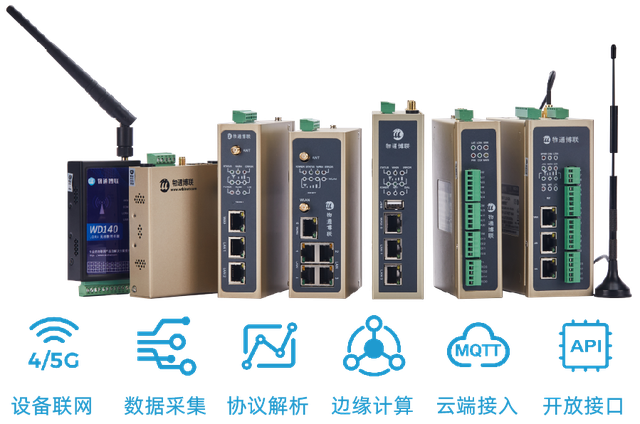
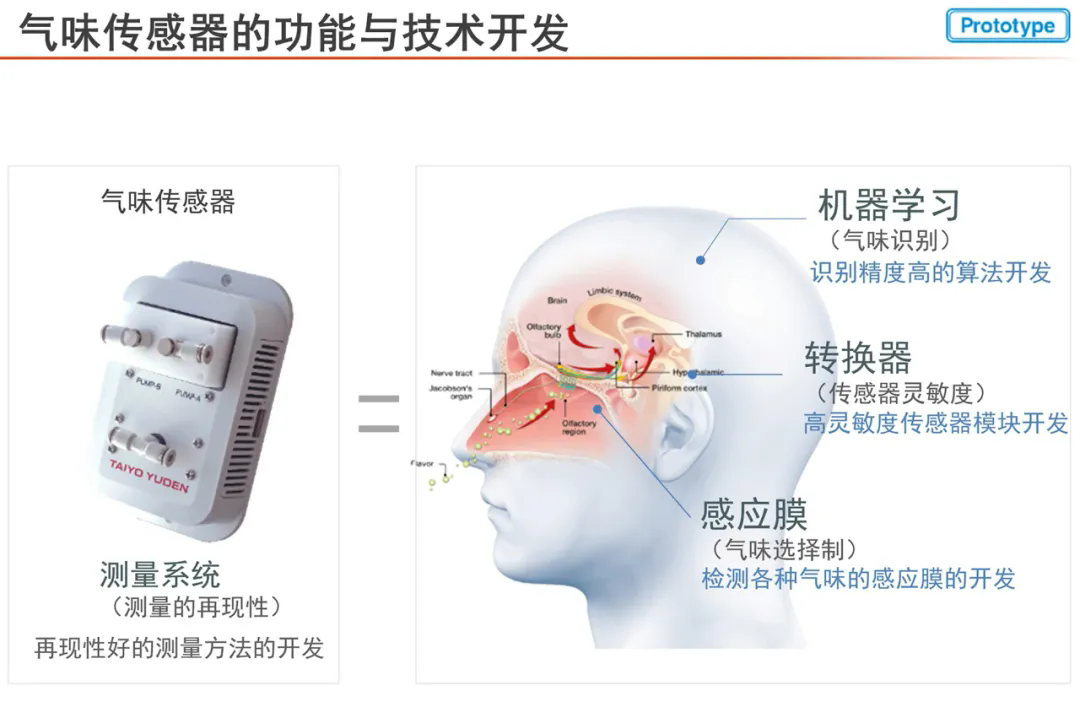











评论